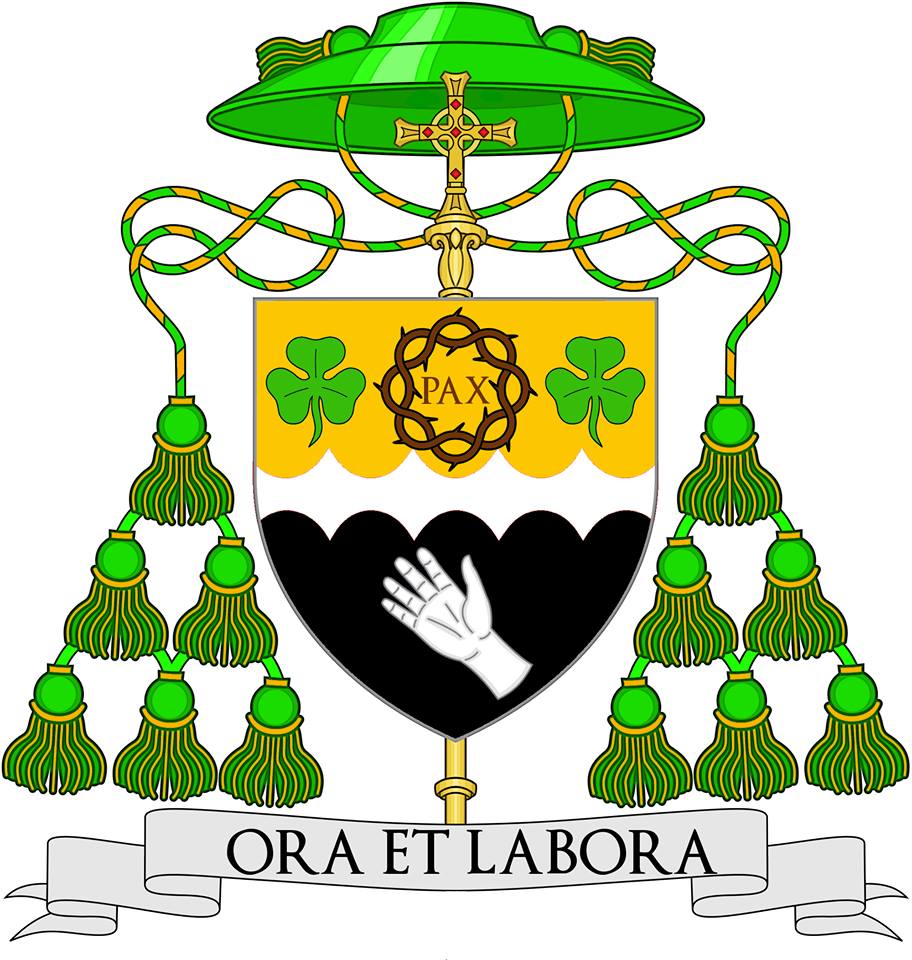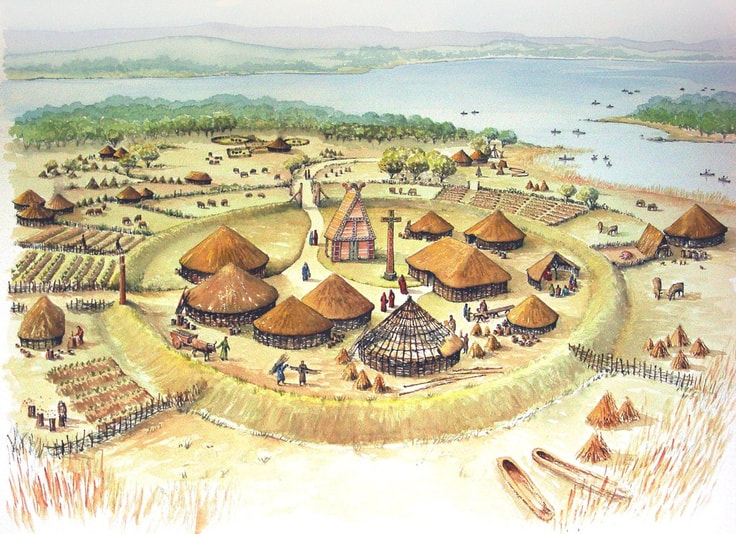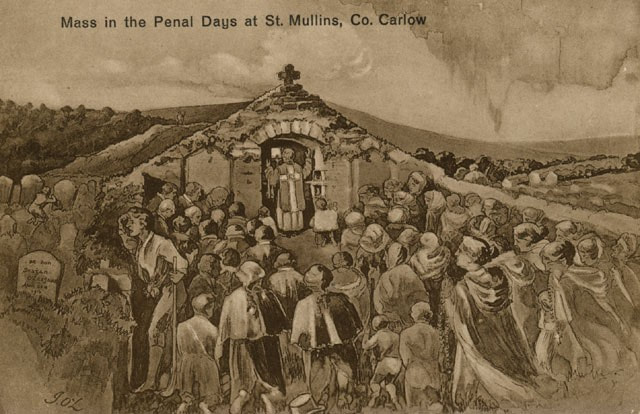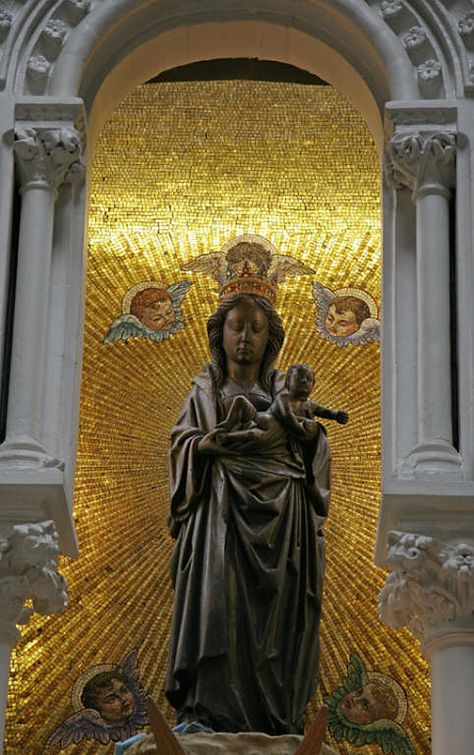Advent Pastoral Letter 2017 -
Most Revd Dom Alistair Bate OSBA (csr)
“Blessed are the poor in spirit,
for theirs is the Kingdom of Heaven”.
Dear brethren, sisters and friends
For each of us, spiritual life is a pilgrimage. Sometimes the going is tough and the terrane is dry, whilst at other times we walk in a pleasant land, refreshed by founatins of living water. For myself, I am glad to say, the last few months have been one of increased clarity and spiritual refreshment. The vision of our particular ecclesial charism is clearer than ever and I find myself now needing to reflect on how our foundational Celtic vision intersects with this clear straight path on which the Lord is leading us.
Among the several neo-Celtic churches, it must be acknowledged that some are quasi-Pagan, most are feminist and some are even Southern Baptist with a Celtic flavour - and there are many variations in between. The Holy Celtic Church International, on the other hand, is very much a traditional Catholic Church, as was, the ancient Celtic Church and the Church in Celtic countries up to and even beyond the Reformation, particularly in Brittany, Ireland and some of the Western Isles. In fact I could go so far as to say that the Celtic Churches of old were in fact “Old Catholic” churches, in that they were completely Western and accepted the authority of the Holy Father in Rome, yet the modern idea of “Papal Infallibility” would have been strange to them and a departure from the Catholic faith.
The distinctive marks of the ancient Celtic churches are often observed to be, reverance for the Divine Presence in all creation, the more important position accorded to women in Celtic society, and a faith built squarely on the bible. These are all important, but today I wish to draw attention to some other equally important characteristics. The Celtic Churches were POOR, SIMPLE and MONASTIC and it strikes me that we could do worse than follow this example.
for theirs is the Kingdom of Heaven”.
Dear brethren, sisters and friends
For each of us, spiritual life is a pilgrimage. Sometimes the going is tough and the terrane is dry, whilst at other times we walk in a pleasant land, refreshed by founatins of living water. For myself, I am glad to say, the last few months have been one of increased clarity and spiritual refreshment. The vision of our particular ecclesial charism is clearer than ever and I find myself now needing to reflect on how our foundational Celtic vision intersects with this clear straight path on which the Lord is leading us.
Among the several neo-Celtic churches, it must be acknowledged that some are quasi-Pagan, most are feminist and some are even Southern Baptist with a Celtic flavour - and there are many variations in between. The Holy Celtic Church International, on the other hand, is very much a traditional Catholic Church, as was, the ancient Celtic Church and the Church in Celtic countries up to and even beyond the Reformation, particularly in Brittany, Ireland and some of the Western Isles. In fact I could go so far as to say that the Celtic Churches of old were in fact “Old Catholic” churches, in that they were completely Western and accepted the authority of the Holy Father in Rome, yet the modern idea of “Papal Infallibility” would have been strange to them and a departure from the Catholic faith.
The distinctive marks of the ancient Celtic churches are often observed to be, reverance for the Divine Presence in all creation, the more important position accorded to women in Celtic society, and a faith built squarely on the bible. These are all important, but today I wish to draw attention to some other equally important characteristics. The Celtic Churches were POOR, SIMPLE and MONASTIC and it strikes me that we could do worse than follow this example.
The Beatitudes tell us that “Blessed are in poor in spirit” and in the lives of the Celtic saints we certainly see this beatitude being lived in all its fullness. Sometimes with barely a cloth or an animal skin to cover them Celtic hermits tooks to the hills and isles to be alone with God, and were often close to starvation, so absorbed were they in Divine contemplation. For a more recent equivalent impulse one need look no further than St Francis and his very early followers, who were motivated by exactly the same pure evangelical spirit. Nor could many of the Celtic saints have become penniless missionaries to far away places had they not also been “poor in spirit”. Sts Columbanus, Gall, Fergal, Cathal, Donagh and Killian are just a few of the names we remember who left all to follow Christ and the Apostles as poor mendicant missionaries, the original “Episcopi Vagantes”.
The faith of the Celtic saints was also a very simple faith, based on the Gospels, expressed in recitation of the Psalter and celebrated in the Eucharist. The fact that the Reformation could not take root in Ireland is a testament to the profound Eucharistic orientation of that particular Celtic nation. In Ireland, the love of the Mass and the Real Presence of our Lord in the Holy Eucharist could not be obliterated even through the harshest of the Penal times. Our Lady too, has always had a particuarly important place in the Celtic heart, and hopefully always will. These two, devotion to the Blessed Sacrament and to Our Blessed Lady, are central to Celtic Christianity and to the Holy Celtic Church International. In fact I would go so far as to say they are two of the most essential pillars of our faith and will be the means by which the churches thrive and Christ the King eventually reigns over all. This was also the vision of Blessed Maria Franciszka Kozlowska of the Mariavite movement and it is perfectly in tune with our own strongly Eucharistic and Marian Celtic tradition. Faith in the Help of Mary and in the Real Presence of Our Lord, who is among us in the sacrament of His Love, is the essential heart of a simple faith, a faith that the simplest souls can easily grasp. It is the faith of the “poor in Spirit”.
The faith of the Celtic saints was also a very simple faith, based on the Gospels, expressed in recitation of the Psalter and celebrated in the Eucharist. The fact that the Reformation could not take root in Ireland is a testament to the profound Eucharistic orientation of that particular Celtic nation. In Ireland, the love of the Mass and the Real Presence of our Lord in the Holy Eucharist could not be obliterated even through the harshest of the Penal times. Our Lady too, has always had a particuarly important place in the Celtic heart, and hopefully always will. These two, devotion to the Blessed Sacrament and to Our Blessed Lady, are central to Celtic Christianity and to the Holy Celtic Church International. In fact I would go so far as to say they are two of the most essential pillars of our faith and will be the means by which the churches thrive and Christ the King eventually reigns over all. This was also the vision of Blessed Maria Franciszka Kozlowska of the Mariavite movement and it is perfectly in tune with our own strongly Eucharistic and Marian Celtic tradition. Faith in the Help of Mary and in the Real Presence of Our Lord, who is among us in the sacrament of His Love, is the essential heart of a simple faith, a faith that the simplest souls can easily grasp. It is the faith of the “poor in Spirit”.
Lastly, the Celtic churches were monastic churches. The monasteries were likewise poor and very basic by today’s standards, but they provided the nearest thing to towns and centres of education in the wildernesses of north west Europe. They had nothing of the grandeur of Byzantium or Rome, but they did exemplify the grandeur of the “poor in spirit” evangelical vision. Likewise in the Holy Celtic Church International we have none of the material possessions of the greater churches but hopefully more than a fair share of the spirituality, discipline and devotion.
So, as we begin a new liturgical year I pray that we will really embrace the essentials and find joy in being a poor church, a simple church and a church inspired by monastic spirituality.
I wish you all a blessed Advent!
+Alistair OSBA (csr)
So, as we begin a new liturgical year I pray that we will really embrace the essentials and find joy in being a poor church, a simple church and a church inspired by monastic spirituality.
I wish you all a blessed Advent!
+Alistair OSBA (csr)




 RSS Feed
RSS Feed
